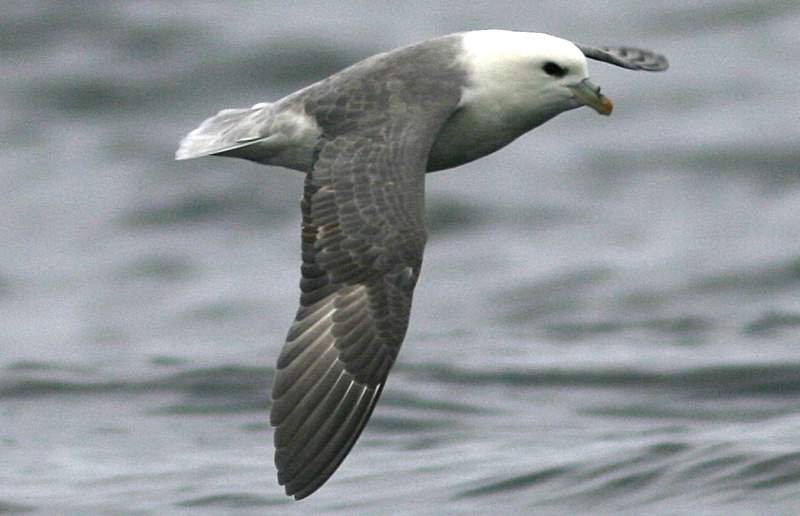
Northern or Arctic Fulmar
Jessie Beck (Oikonos Ecosystem Knowledge, Santa Cruz, California, USA) and colleagues write in the journal Fisheries Oceanography on the bycatch of Northern or Arctic Fulmars Fulmarus glacialis by demersal fisheries in the northern Pacific.
The paper’s abstract follows:
“Characterizing demography of fisheries bycatch is essential to understanding impacts on populations of long‐lived, low‐fecundity species. Northern Fulmars (Fulmarus glacialis rogersii) represent >50% of seabird bycatch in U.S. groundfish and halibut fisheries in the North Pacific. Using specimens collected by federal observer programs, we assessed the sex, age class, and body condition of 1089 fulmars collected between 2004 and 2014. Using regional fulmar breeding phenology, we assess seasonal variation in the relative composition of a given sex or age class. Strong biases in bycatch towards adults and males were documented, with a slight increase in the proportion of males to females during the non‐breeding period. High proportions of adults were observed year‐round. Sex and age biases could be related to behavioral differences, including potential segregation at sea, and reflect similar biases seen in seabird bycatch in other subpolar fisheries. Overall body condition increased as the year progressed from breeding to non‐breeding seasons, possibly revealing the costs of reproduction on adults and recovery through the availability of fisheries offal and bait. Year‐round, only 3% of examined fulmars were emaciated. Together, these results indicate a persistent removal of adult male fulmars in good body condition across a decade, and highlight the contrast of fisheries‐caused mortality and potential assistance of fishery discards to post‐breeding recovery.”
Reference:
Beck, J. Michael, P.E., Hester, M., Nevins, H.M., Donnelly‐Greenan, E. Gibble, C., Phillips, E.M., Young, C. & Fitzgerald, S. 2020. Seasonal variation of Pacific Northern Fulmar bycatch: implications for age and sex‐specific mortality. Fisheries Oceanography doi.org/10.1111/fog.12518 doi.org/10.1111/fog.12518.
John Cooper, ACAP Information Officer, 11 December 2020

 Español
Español  English
English  Français
Français